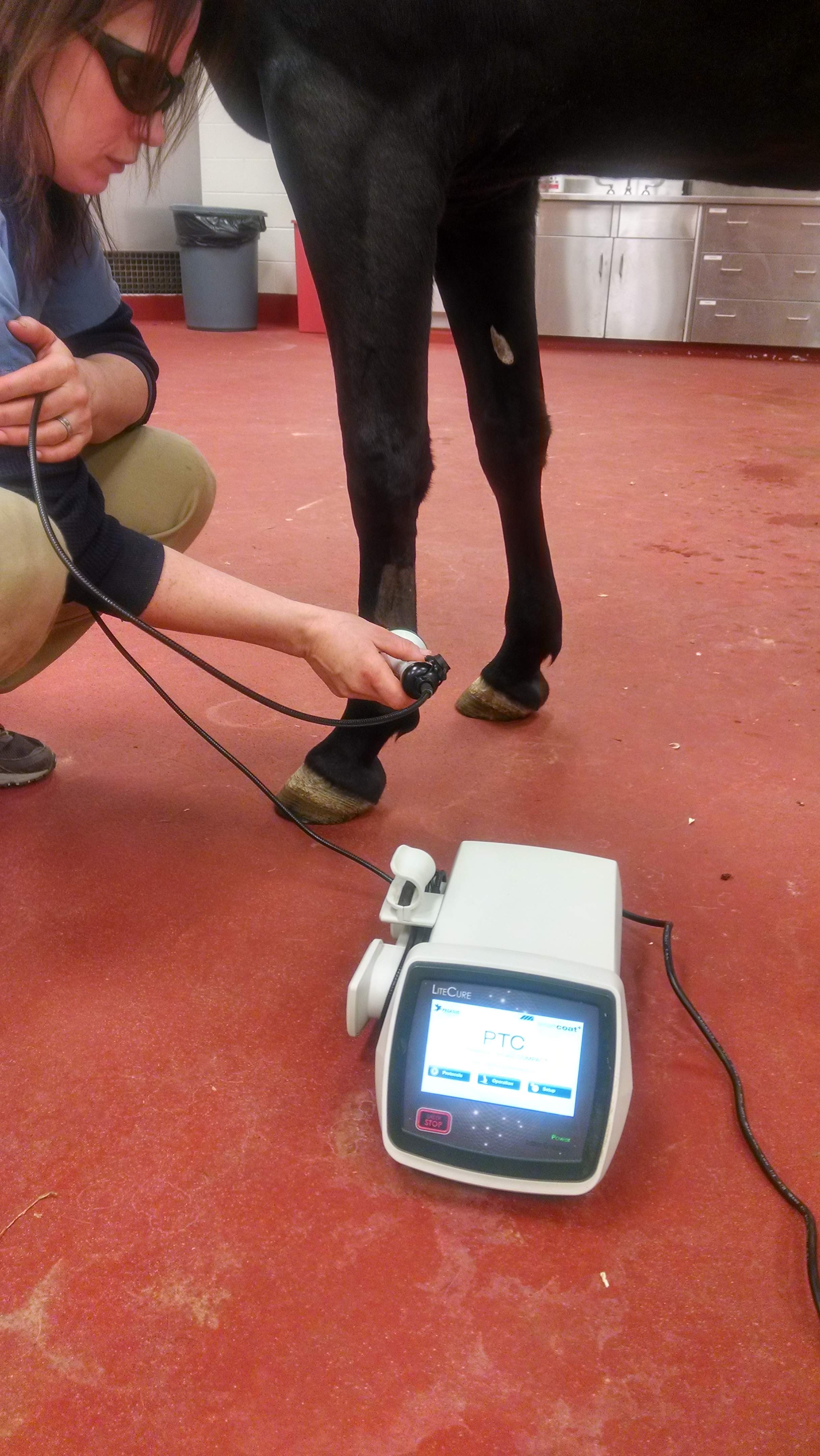Reviewing the Effectiveness of Laser Treatment in Horse Treatment for Injury Recovery
The assessment of laser treatment's performance in equine injury rehab pivots on multiple elements, consisting of recovery time, pain reduction, and tissue regeneration. Scientific studies suggest significant improvements in conditions like tendonitis and osteoarthritis, credited to improved mobile function and elevated ATP manufacturing. Vets regularly observe exceptional results with laser treatment compared to standard methods, positioning it as a critical element in equine care. The necessity for constant tracking and personalized therapy strategies can not be overemphasized. What details clinical evidence supports these claims, and how do veterinarians execute these procedures in technique?
Understanding Laser Therapy
Laser therapy has actually ended up being a crucial tool in vet medicine, especially in the therapy of equine conditions. Known for its non-invasive nature and efficacy, laser treatment entails the application of specific wavelengths of light to boost cells repair service and decrease inflammation. This restorative modality is increasingly preferred for its capability to speed up the healing procedure in equines struggling with a selection of bone and joint injuries and chronic problems.
The main mechanism behind laser therapy is its capability to enhance cellular features. When laser light penetrates the skin, it is soaked up by mitochondria, the giant of cells, which brings about enhanced manufacturing of adenosine triphosphate (ATP) This biochemical energy boost promotes cellular repair service and regrowth. In addition, laser treatment promotes vasodilation, enhancing blood circulation and oxygen delivery to damaged cells, hence speeding up recuperation.
In equine medication, laser therapy is particularly helpful for problems such as tendonitis, osteoarthritis, and wound healing. The method is admired for its pain-relieving residential or commercial properties, enabling horses to regain movement and feature a lot more swiftly. Vets additionally value its marginal adverse effects contrasted to various other therapy methods, making it a reputable and risk-free choice for equine treatment.

Exactly How Laser Treatment Works

Upon absorption, these photons cause a collection of biochemical modifications, enhancing mitochondrial feature and leading to raised adenosine triphosphate (ATP) manufacturing. This increase in ATP accelerates mobile metabolic rate, promoting tissue fixing and regeneration. Additionally, laser treatment modulates inflammatory responses by influencing cytokine levels and reducing oxidative stress and anxiety, consequently minimizing pain and swelling.
An additional considerable facet of laser treatment is its role in boosting microcirculation. The therapy advertises vasodilation, improving blood circulation and oxygen shipment to broken tissues (Equine Therapy). This promotes the removal of cellular debris and sustains the expansion of fibroblasts and collagen synthesis, crucial for injury healing
Scientific Evidence
The efficacy of laser therapy in equine therapy has actually been corroborated via numerous clinical studies, showcasing its restorative potential across an array of problems. A research study performed by Turner et al. visit this website (2012) showed that horses treated with low-level laser treatment (LLLT) for tendon injuries showed sped up recovery compared to those getting traditional treatments.
Similarly, research by Johnson and coworkers (2015) concentrated on equine muscle injuries, exposing that Website laser therapy significantly quickened muscular tissue fiber regeneration and decreased muscle stiffness. Professional analyses have actually revealed that laser treatment can reduce persistent problems such as osteo arthritis.
Vet Insights

Vets additionally value the adaptability of laser therapy. She points out that laser treatment can be customized to the certain requirements of each equine, guaranteeing optimum outcomes.
Furthermore, veterinarians value the ability to incorporate laser therapy with other therapy techniques. This multimodal method can enhance total treatment effectiveness, offering an extensive remedy for equine rehab. Such endorsements from skilled specialists underscore the expanding approval and application of laser therapy in equine medication.
Practical Factors To Consider
A key element of executing laser treatment in equine treatment includes recognizing the useful factors to consider that guarantee its efficacy and safety. It is crucial to pick the appropriate laser gadget, as different kinds vary in wavelength, power, and infiltration deepness. Veterinarians need to be fluent in these criteria to tailor treatment protocols successfully to each injury type
Furthermore, the Bonuses regularity and period of laser treatment sessions need mindful preparation to take full advantage of therapeutic benefits while minimizing any potential negative effects. Constant surveillance of the steed's reaction to therapy can guide needed modifications in the therapy program. Establishing a safe and controlled setting throughout therapies is also necessary to prevent unintended exposure to laser exhausts, which could damage both the horse and the trainer.
Training and qualification of workers administering laser therapy are paramount to make sure correct technique and to promote safety and security standards. In addition, keeping exact records of each session, including laser settings and observed end results, is essential for assessing the total performance of the treatment and for making data-driven decisions.
Conclusion
Laser therapy has actually emerged as a reliable technique in equine injury rehab, offering significant benefits in healing time, discomfort relief, and cells recovery. For optimal outcomes, continuous surveillance and individualized therapy protocols stay essential in leveraging the full capacity of laser therapy in equine care.
Comments on “Equine Therapy: Just How It Helps Build Confidence and Emotional Stamina”